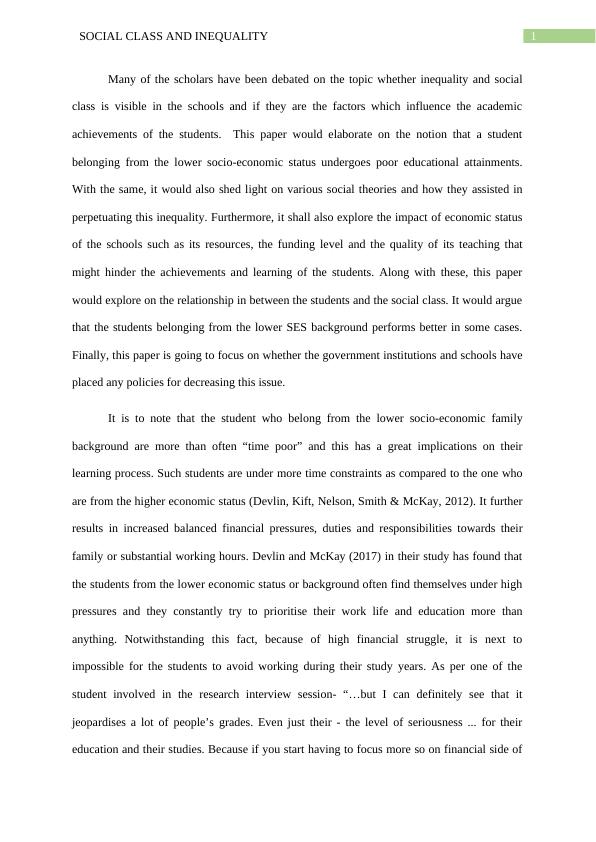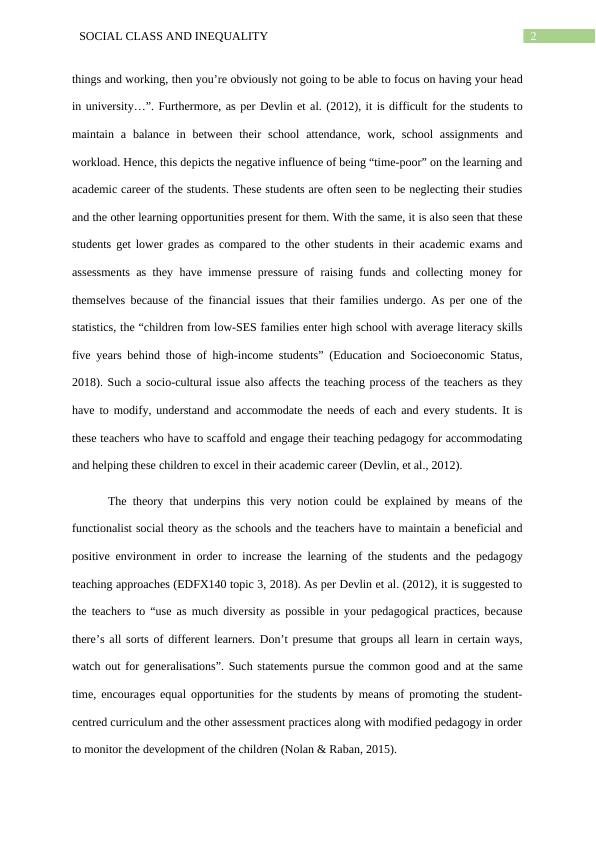Social Class and Inequality in Education
8 Pages2064 Words234 Views
Added on 2023-06-04
About This Document
This paper elaborates on the notion that a student belonging from the lower socio-economic status undergoes poor educational attainments. It sheds light on various social theories and how they assisted in perpetuating this inequality. Furthermore, it explores the impact of economic status of the schools such as its resources, the funding level and the quality of its teaching that might hinder the achievements and learning of the students. Along with these, this paper would explore on the relationship in between the students and the social class. It would argue that the students belonging from the lower SES background performs better in some cases. Finally, this paper is going to focus on whether the government institutions and schools have placed any policies for decreasing this issue.
Social Class and Inequality in Education
Added on 2023-06-04
ShareRelated Documents
End of preview
Want to access all the pages? Upload your documents or become a member.
Sociological Understanding for Improving Education in Australia
|15
|4212
|92
Socio-Economic Class and Education
|4
|529
|50
Effect of low Socioeconomic Condition on GCSE result
|7
|1540
|84
Examining Inequalities in Disadvantaged Schools
|3
|1016
|461
Socio-Economic Status and Health
|9
|2413
|325
Socio-Economic Factors and Their Effects on Health
|37
|14340
|82



